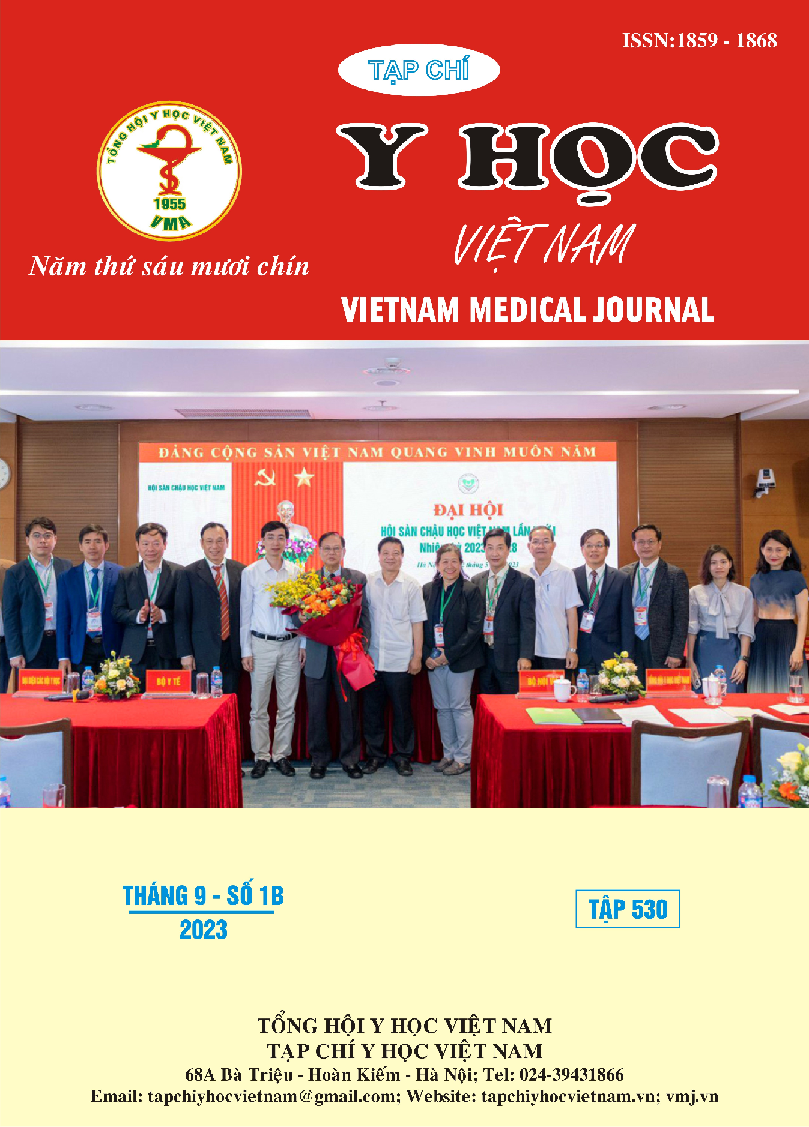INTRAVENOUS MISPLACEMENT OF THE NEPHROSTOMY CATHETER – A RARE AND SEVERE COMPLICATION FOLLOWING PERCUTANEOUS NEPHROSTOLITHOTOMY: A CASE REPORT
Main Article Content
Abstract
Intravenous misplacement of the nephrostomy catheter following percutaneous nephrostolithotomy (PCNL) is severe and extremely rare, and little information is available about this complication. Because the patient’s prognosis may be poor, sufficient attention should be paid to early identification and treatment of this complication. We report a case with intravenous nephrostomy catheter misplacement and active bleeding focis after PCNL in another hospital and was transferred to our hospital. The patient underwent vascular intervention to plug the pseudoaneurysms and arteriovenous fistula with coils and bio-glue. After that, the patient underwent renal vein – inferior vena cava angiography, renal sinus drainage and lesion node with surgicel. There were no severe complications. However, there is a small amount of thrombus attached to the vena cava wall but no anticoagulation was needed. During the withdrawal process, urological surgeon, cardiovascular surgeon, anesthesiologist, resuscitator and radiological intervention were involved. Before and after withdrawal, the patient was continously monitored at the Emergency – Intensive Care Department. Withdrawal could be performed by open surgery or under the supervision of imaging modalities. In which, the reports showed that drainage under supervision of imaging modalities was safer and less invasive than open surgery.
Article Details
Keywords
Misplacement of nephrostomy catheter, percutaneous nephrostolithotomy, catheter withdrawal, percutaneous nephrostomy
References
2. Kotb AF, Elabbady A, Mohamed KR, et al. Percutaneous silicon catheter insertion into the inferior vena cava, following percutaneous nephrostomy exchange. Can Urol Assoc J. 2013; 7: E505–E507.
3. Seitz C, Desai M, Hacker A, et al. Incidence, prevention, and management of complications following percutaneous nephrolitholapaxy. Eur Urol. 2012; 61: 146–158.
4. Fu W, Yang Z, Xie Z, et al. Intravenous misplacement of the nephrostomy catheter following percutaneous nephrostolithotomy: two case reports and literature review. BMC Urol. 2017; 17: 43.
5. Chen XF, Chen SQ, Xu LY, et al. Intravenous misplacement of nephrostomy tube following percutaneous nephrolithotomy: three new cases and review of seven cases in the literature. Int Braz J Urol. 2014; 40: 690–696.
6. Koseoglu K, Parildar M, Oran I, et al. Retrieval of intravascular foreign bodies with goose neck snare. Eur J Radiol. 2004; 49: 281–285.
7. Mallmann CV, Wolf KJ and Wacker FK. Retrieval of vascular foreign bodies using a self-made wire snare. Acta Radiol. 2008; 49: 1124–1128.
8. Srivastava A, Singh KJ, Suri A, et al. Vascular complications after percutaneous nephrolithotomy: are there any predictive factors? Urology. 2005; 66: 38–40.
9. Wang C, Chen S, Tang F, et al. Metachronous renal vein and artery injure after percutaneous nephrostolithotomy. BMC Urol. 2013; 13: 69.
10. Winfield HN, Weyman P and Clayman RV. Percutaneous nephrostolithotomy: complications of premature nephrostomy tube removal. J Urol. 1986; 136: 77–79.


